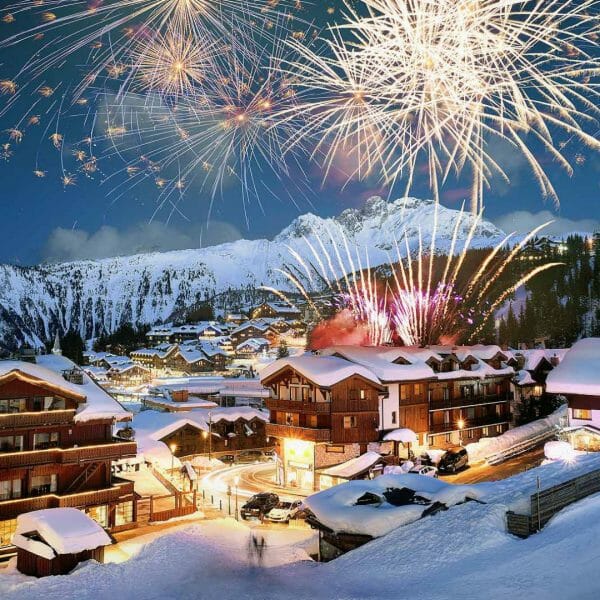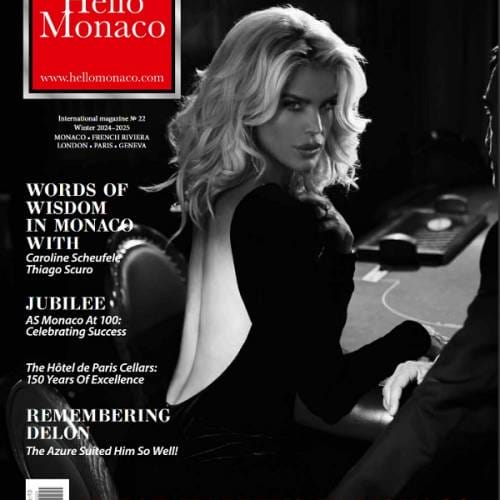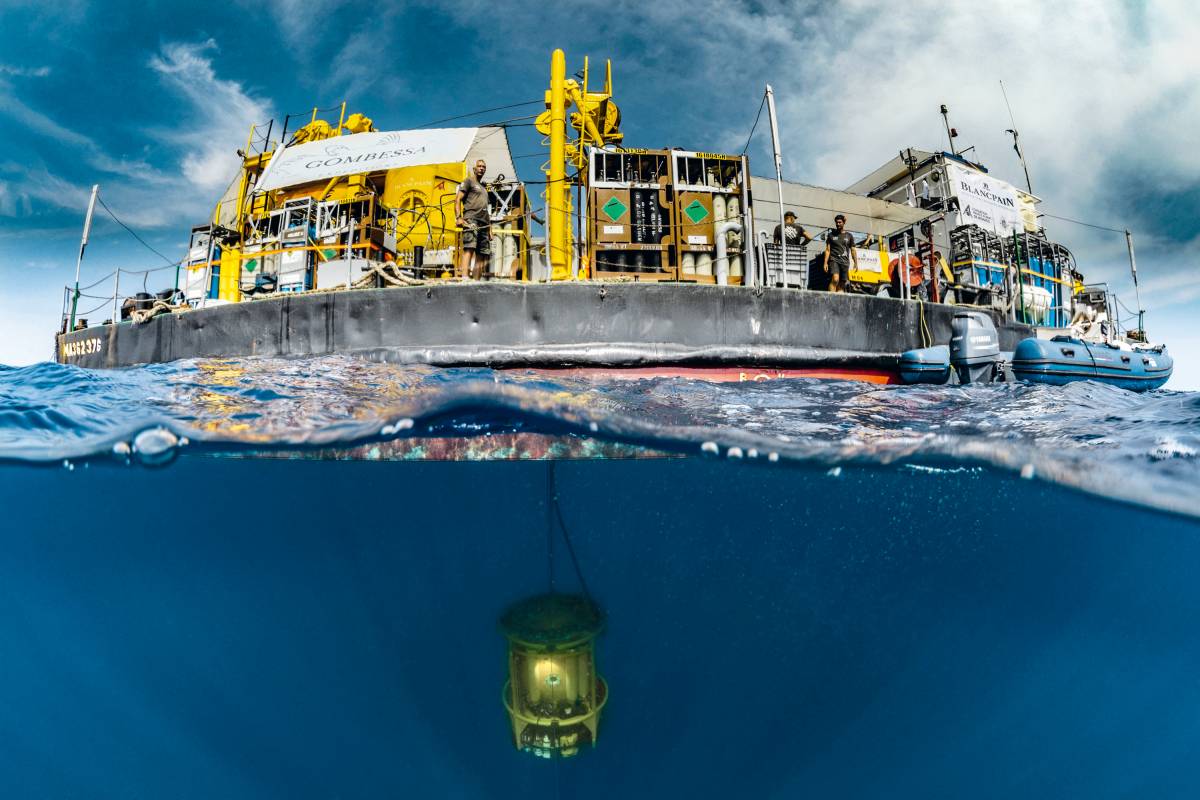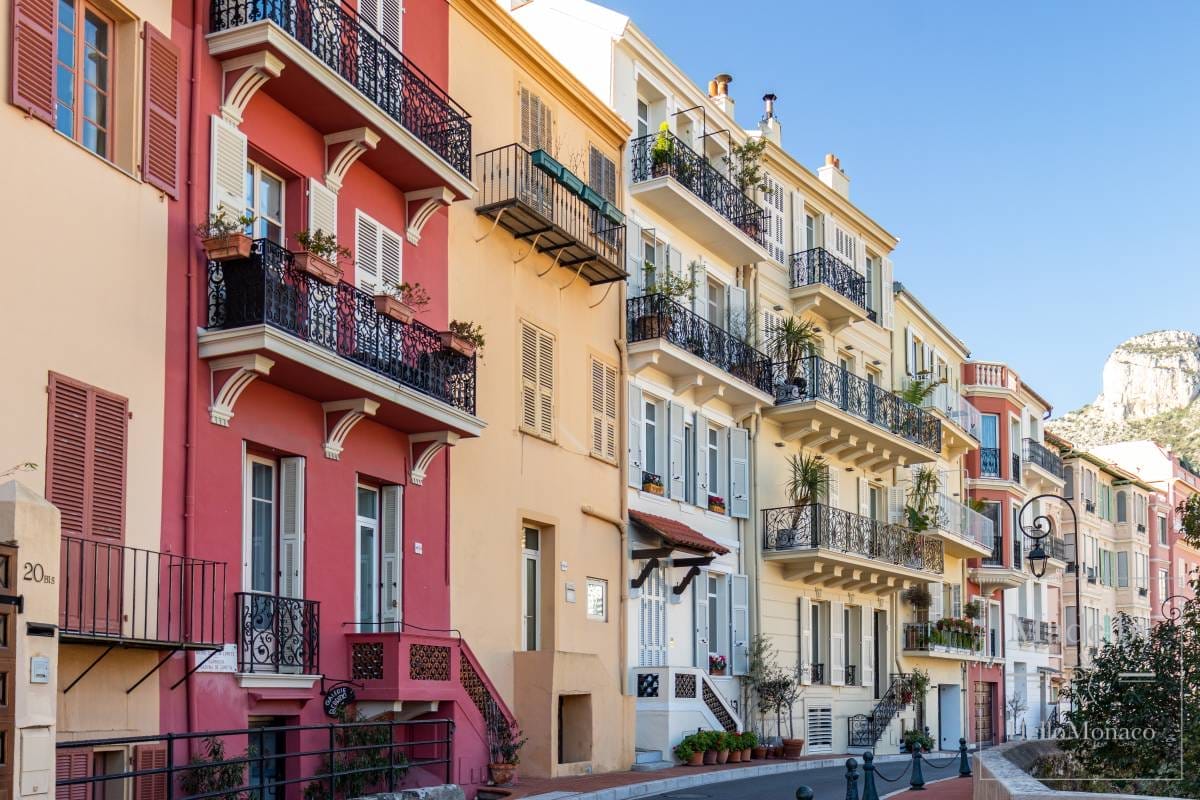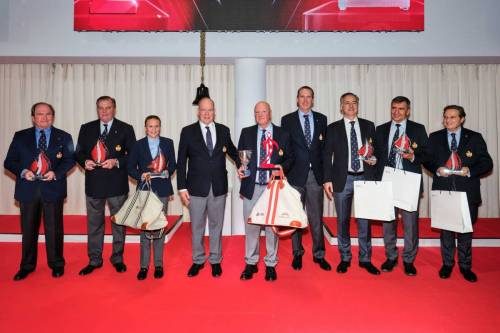“The sea, the great unifier, is the man’s only hope”, used to say the great explorer and innovator Jacques Yves Cousteau. Marine ecosystems are an essential part of the survival of living beings and Prince Albert II of Monaco Foundation (FPA2) are investing heavily in promoting research and knowledge to guarantee the environment of a healthy ocean to preserve liveable climate conditions. The conclusion of the most recent ‘Mission Cap Corse’ within the Gombessa 6 Expedition programme, held on the 20th July 2021 at the semi-floating dike at Quai Rainier III (Port Hercules), represented a particularly meaningful moment in the Foundation’s schedule.
HelloMonaco had the privilege to assist the disembarking of the submarine shuttle where four aquanauts spent twenty days at about 120 metres deep sea. Among them Laurent Ballesta, photographer, researcher and environmentalist who headed the expedition supported by about forty professionals. Antonin Guilbert and Thibault Rauby, biologists and professional divers, and Roberto Rinaldi, scuba photographer and film maker, were the other members of the team.
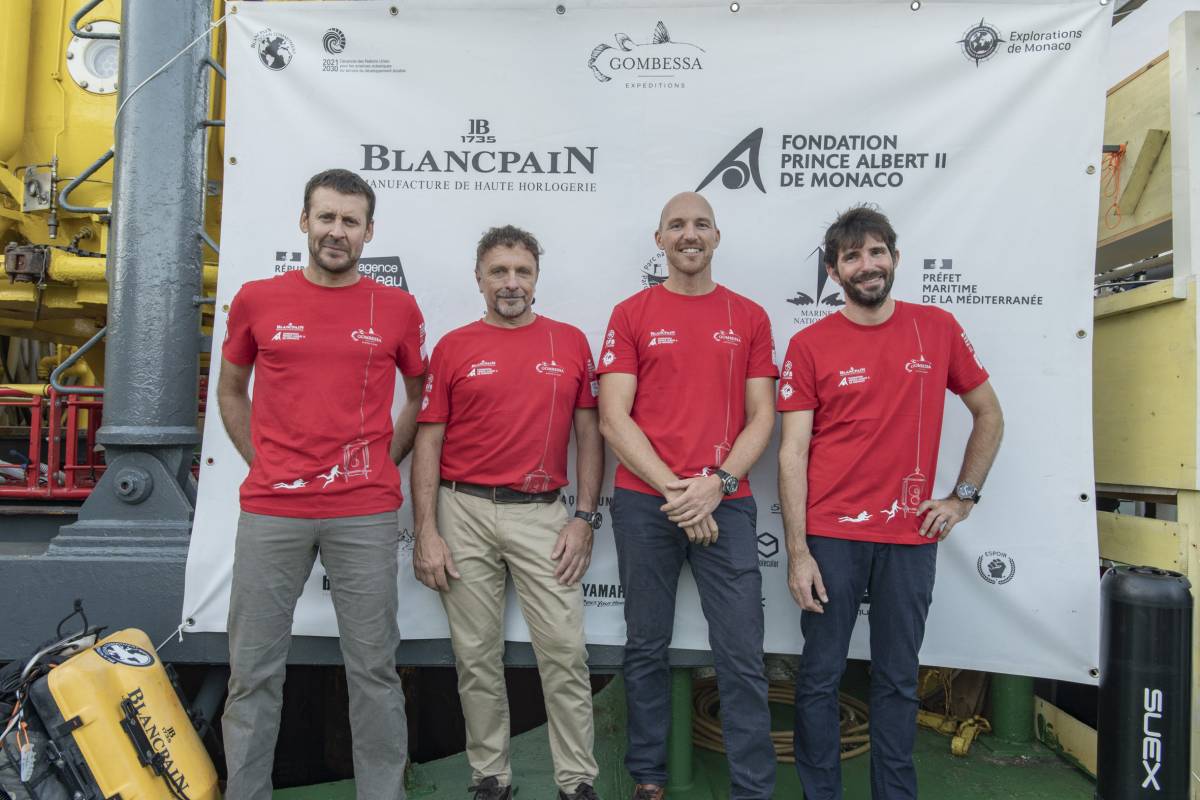
The four adventurers ‘locked down’ voluntarily in the kingdom of the seas, north-east from the extreme rocky tip of Corse island, in the context of the well-known marine reserve, trying to unveil some secrets concerning underwater species living in one of the few existing Mediterranean coral rings, still undiscovered by human beings.
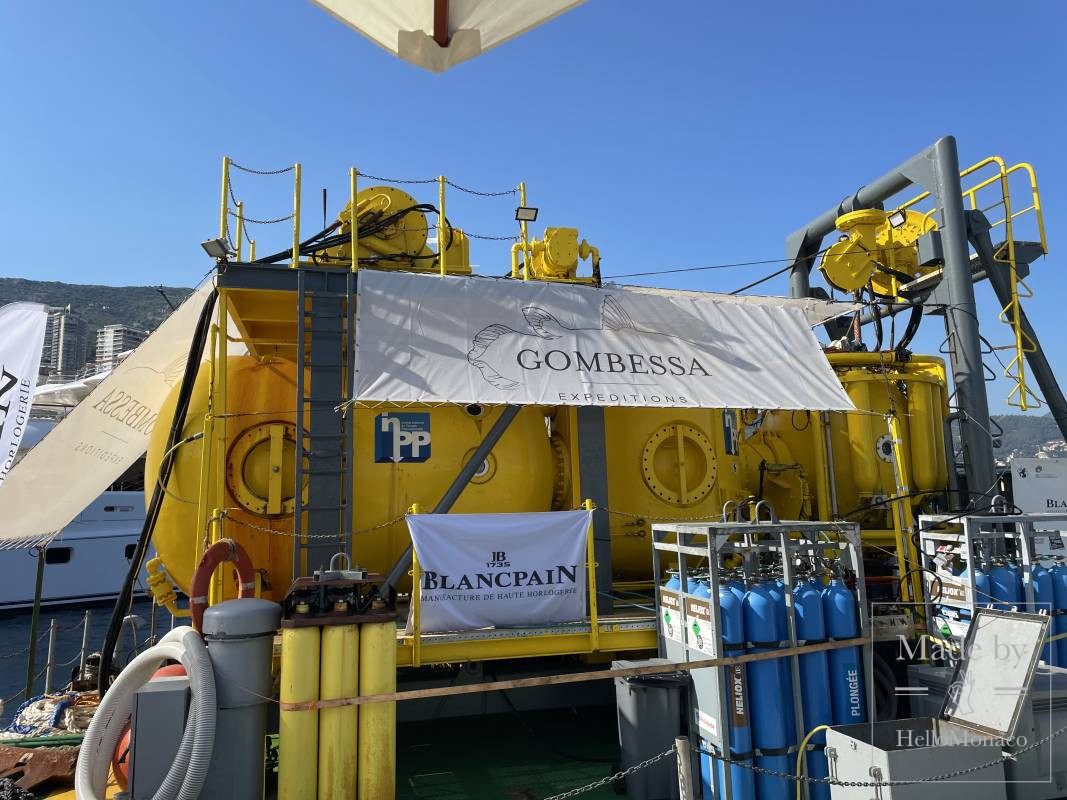
The Station Bathyale, the three-space high-tech vessel where they had spent their mission, takes its name from the technical term referring to the strip measuring more than 200 meters, just before the deep sea. It was installed on a barge offered by the Institut National de Plongée Professionnelle – INNP (French National Institute of Professional Diving), dragged by a tugboat of the National Navy that docked in Monaco to celebrate its final stage and to be welcomed by Prince Albert II of Monaco Foundation, main sponsor of the initiative, H.E. Pierre Dartout, Minister of State, and some distinguished guests.
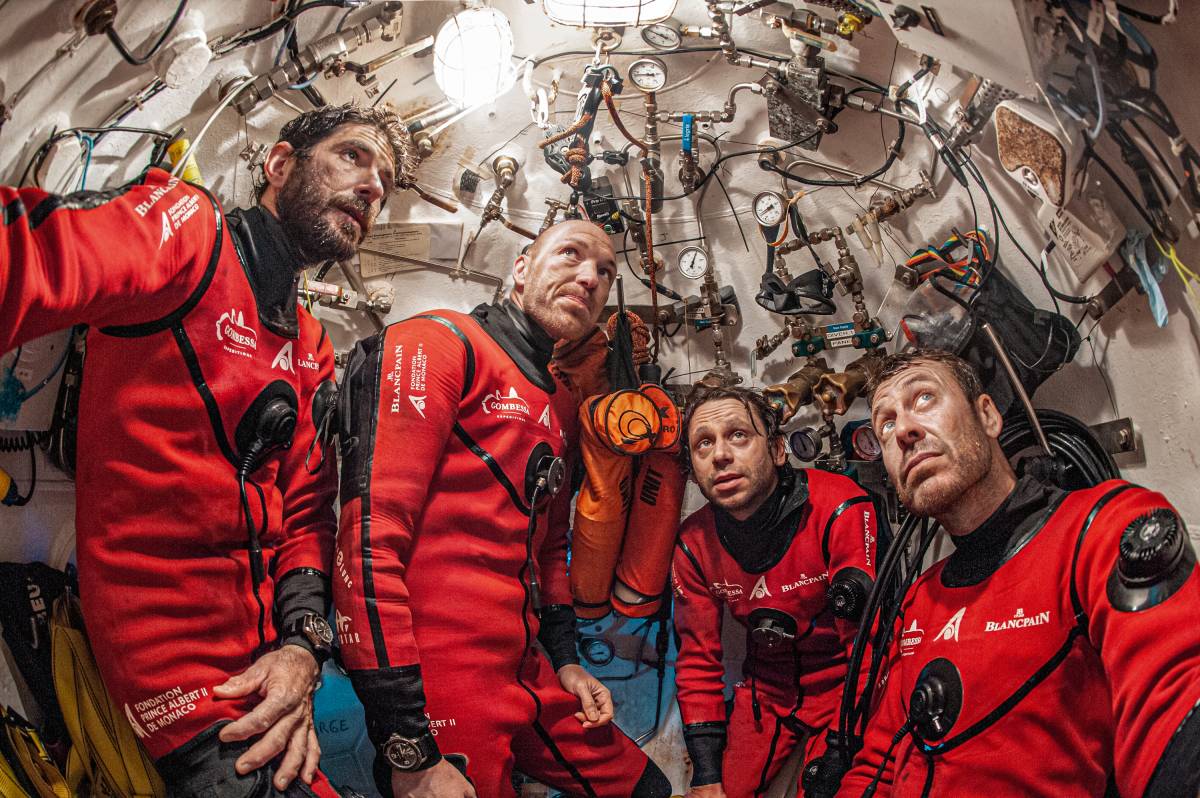
The explorers gave HelloMonaco some fresh feedbacks during a live video-chatting in the last phase of depressurization, whereas the pressure at those depths is thirteen times stronger than the Earth’s. A true test to the human body.
“We are proud of many things in this expedition and at the same time sorry that we could not do everything we dreamed of doing since research always leads to new horizons”, stressed Laurent Ballesta (L.B.) – “…having achieved all pivotal tasks is just wonderful”.
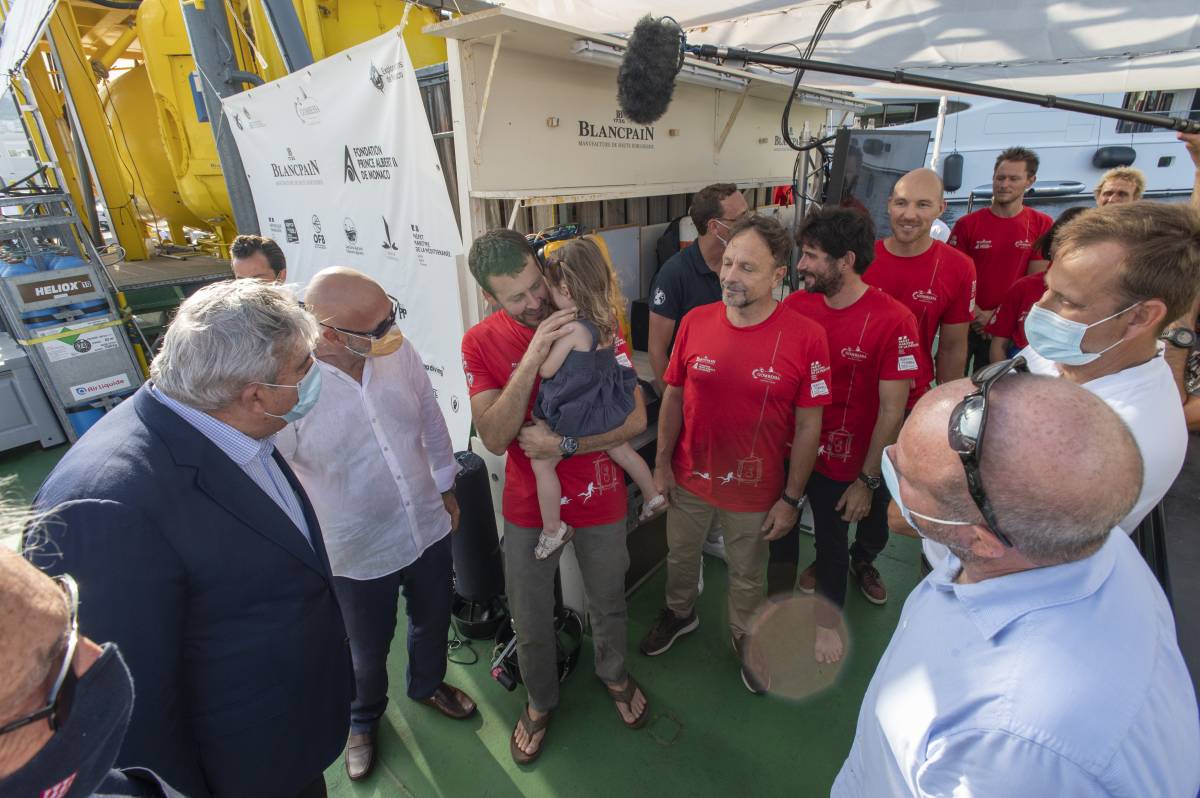
HelloMonaco: What did you appreciate most of this challenge? Which discoveries did you make?
L.B.: The very fact that I was able to share with my colleagues the discovery of those underwater places was particularly important to me. The mission was a success both from the human, technical and scientific points of view and we are happy to end up in Monaco. In particular, we took a few drill cores of that mysterious coral formation, something never realized and tested before. Most of the scientific data collected have already been sent to be examined by a team of university researchers from Montpellier, Marseille and Monaco and we will soon know the results. Moreover, the exceptional visual carnet we realised will serve undoubtedly for educational dissemination. A great result coming from a precious collaboration between all partners, starting from the Sephismer, French Navy human dive cell. Last but not least, we discovered a series of submarine caves that would require more than one visit.
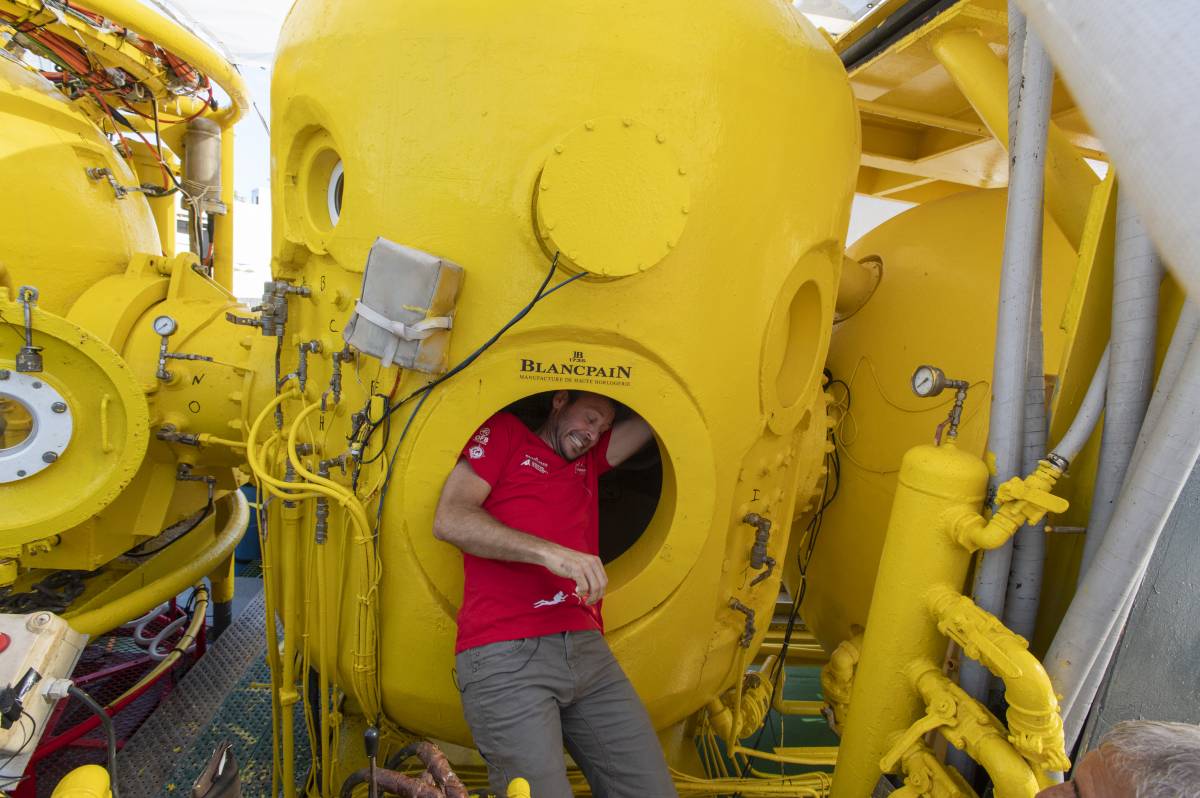
We also managed to meet rare fauna like a dog-teeth grouper as well as to find a new marine living being, a small sea slug nudibranch, we had already met last year to which we could give a name which will be probably my daughter’s. We also witnessed the unusual presence of Callogorgia soft corals in shallower waters as group of mother-of-pearl small shells thought to be present only in the tropics. And much more remains to be discovered.
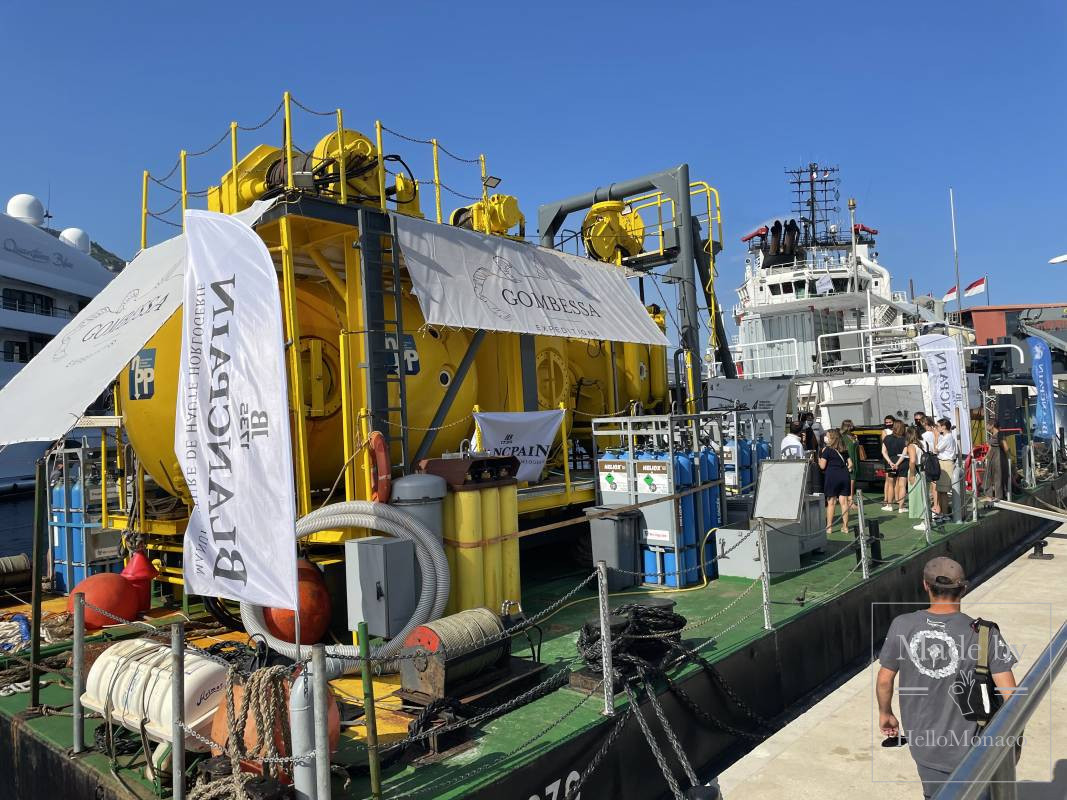
HelloMonaco: How did you train to face this expedition?
L.B.: We have not made a special preparation apart from the fact that all four of us dive regularly throughout the year, and we have been doing it for a few decades. Keeping practice in different underwater condition is the essential ingredient and this is just the result of a lifetime commitment. Then, it is all about the will of doing things.
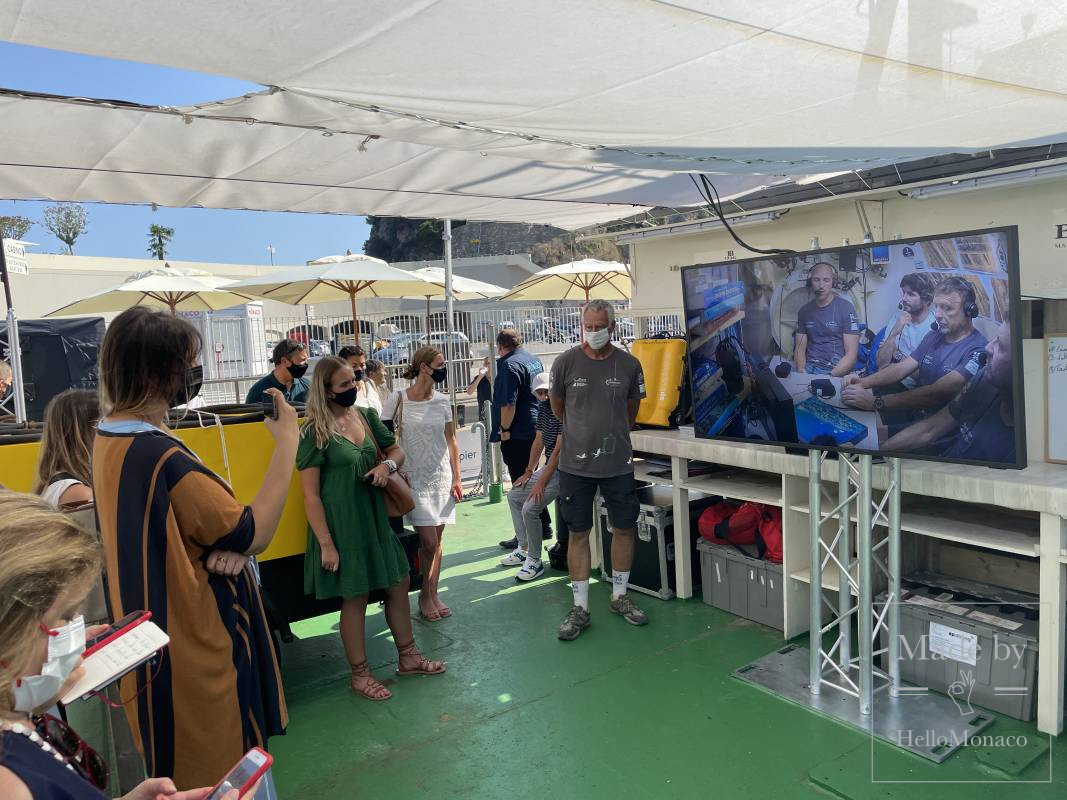
HelloMonaco: Did you find any traces of the human impact in the examined sea depths?
L.B.: Alongside the beautiful discovery of some archaeological remains, a few amphorae maybe from thousands of years old, unfortunately we have also found some plastic waste that now invade every corner of the Mediterranean.
HelloMonaco: Are you planning new adventures in the near future?
L.B.: Of course, it will be time to go back to new explorations. Often, when we best measure what we don’t know, that’s what we expect to know best. We trained in the Mediterranean, where we became biologists and so this is where we best measure the potential mysteries to be solved. But maybe something will also lead us elsewhere. Who knows?

“What was exceptional was to discover places we were not used to”, reaffirmed Thibaut Rauby – “we discovered an incredible biodiversity which surprised the whole team making us want to go back soon”, he added.
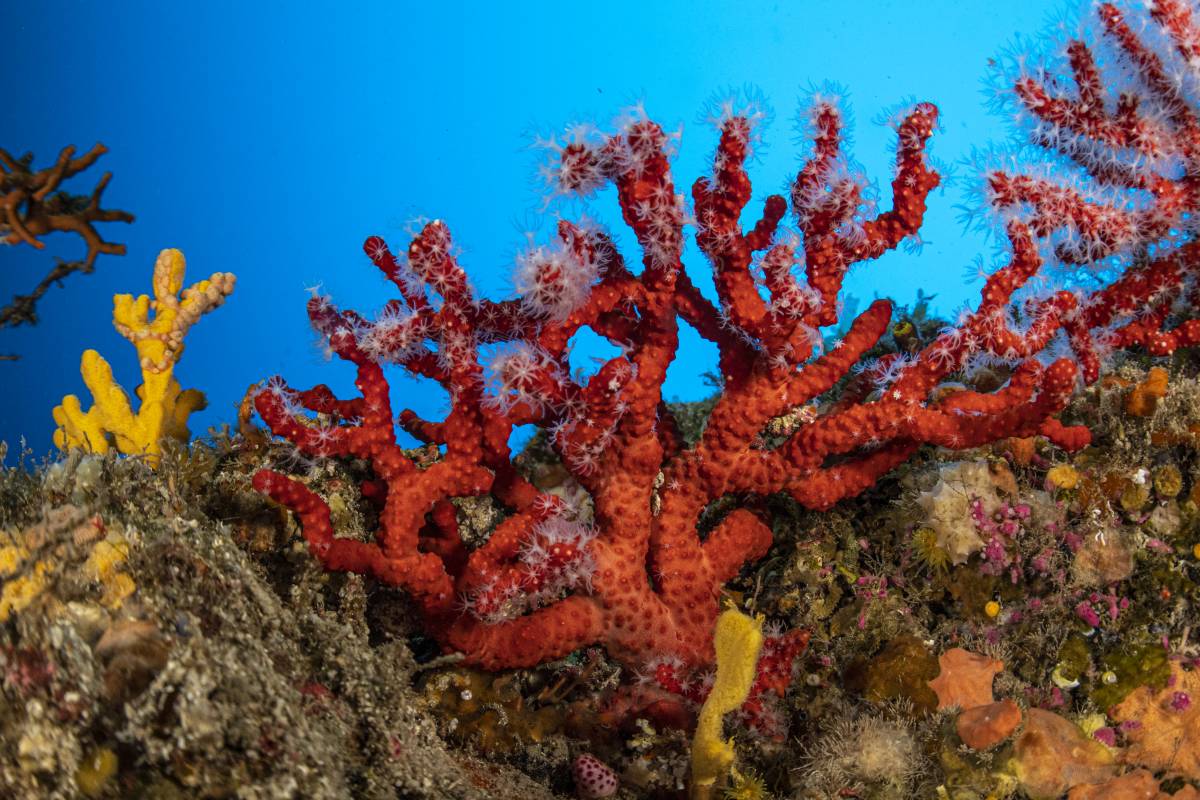
“We completed many operations as we had hoped despite the adverse weather conditions that have stopped us for four days”, stated Julie Deter, scientific director of ‘Mission Cap Corse’ – “three cores of seabed, a dozen sediment samples on two rings and samples of species of which three still seem unidentified”, she concluded.
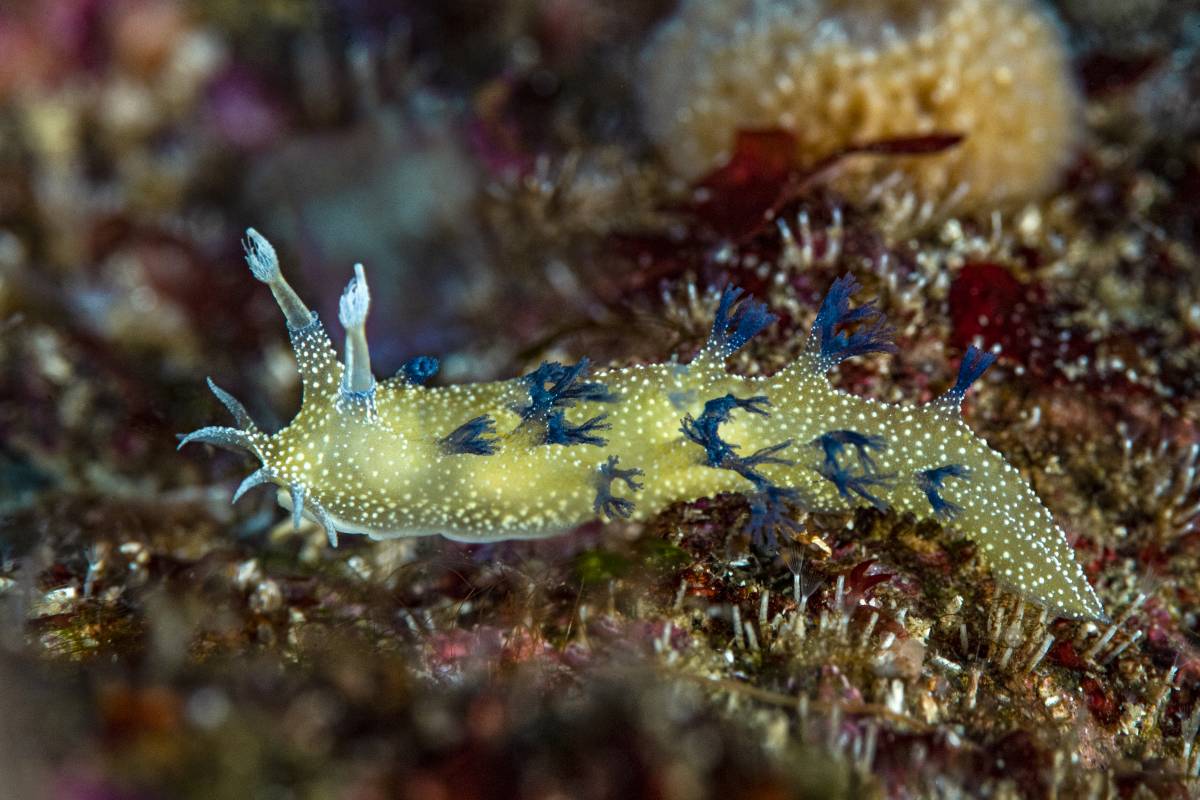
Once more, Gombessa 6 Expedition conveyed strong emotions and the best is yet to come.

